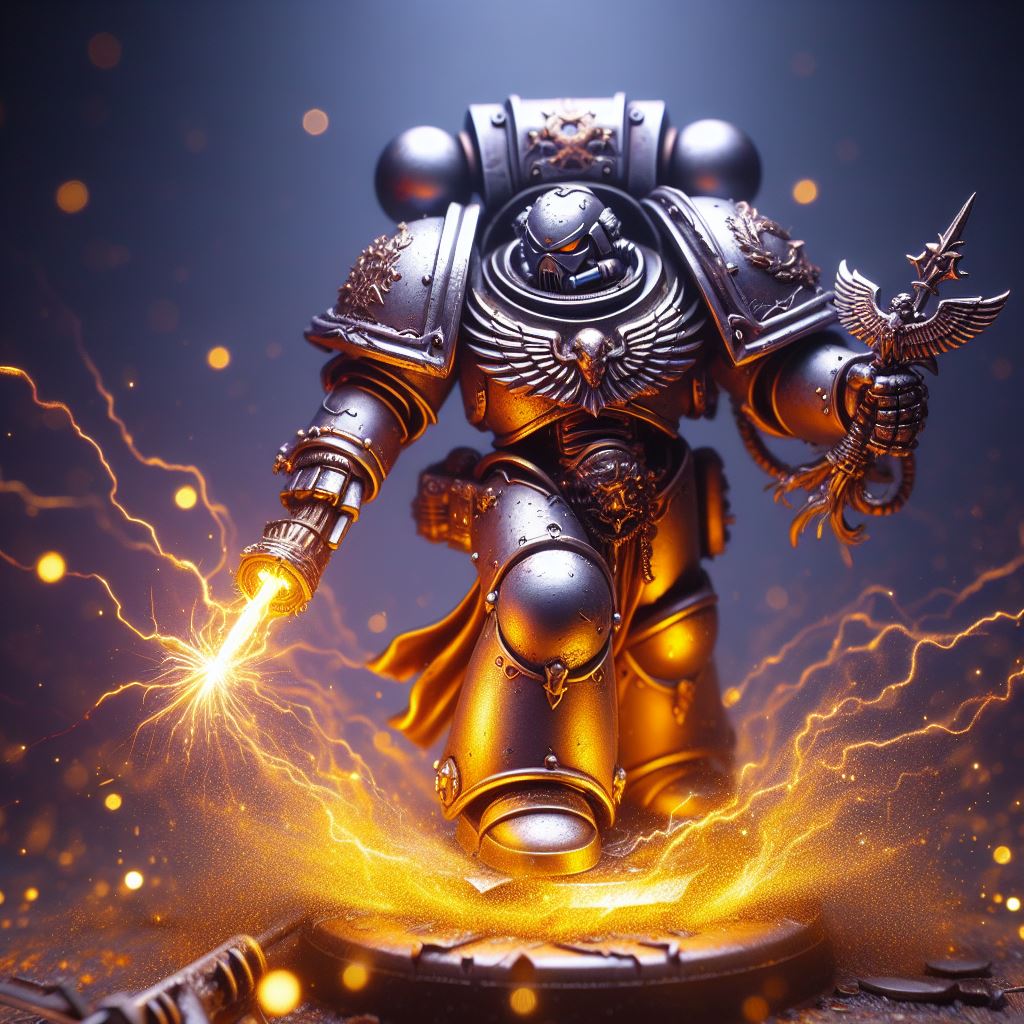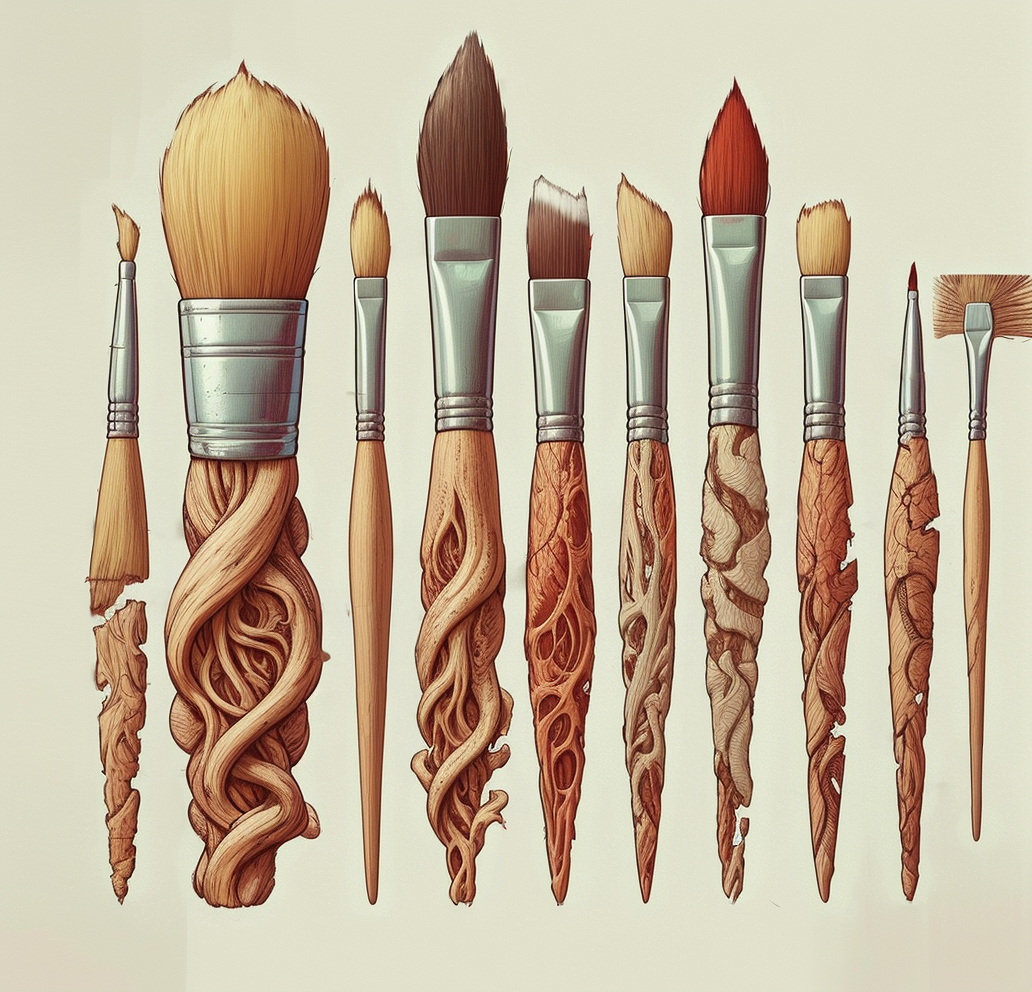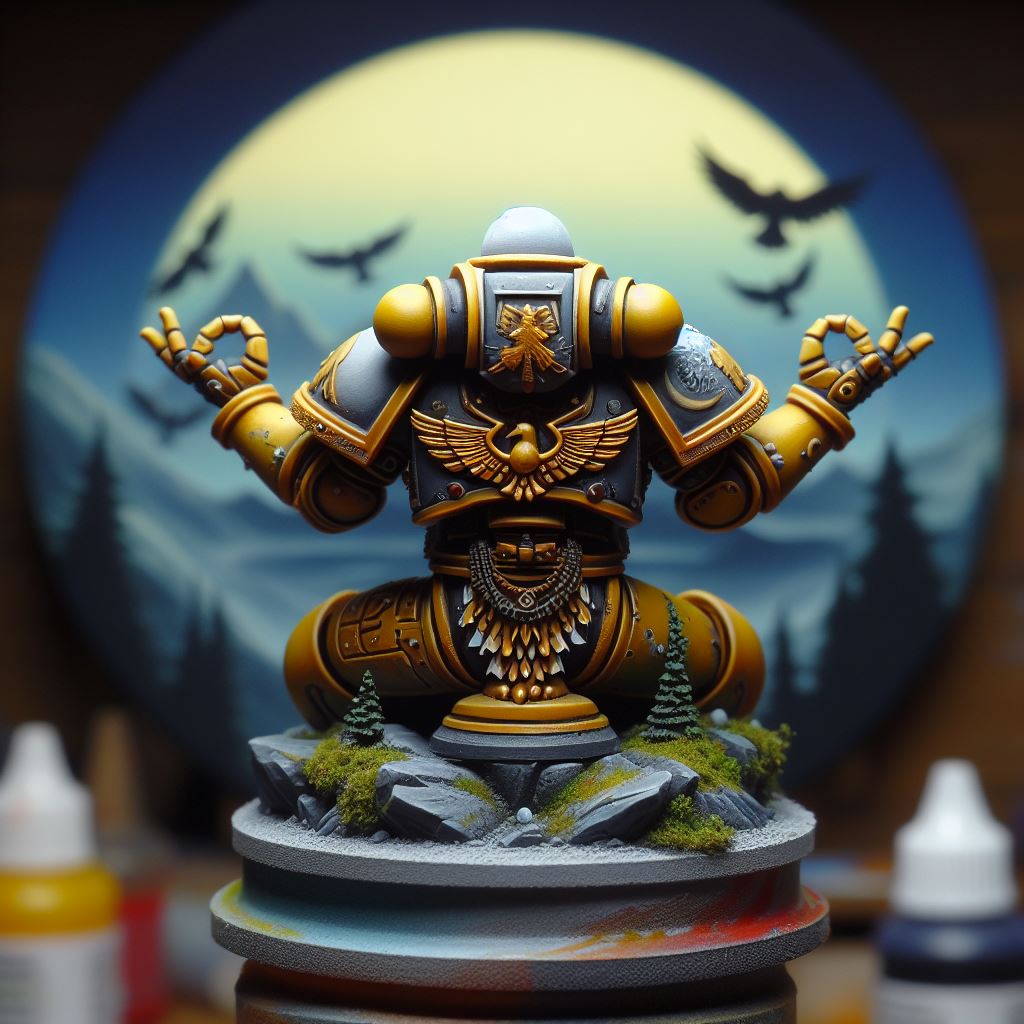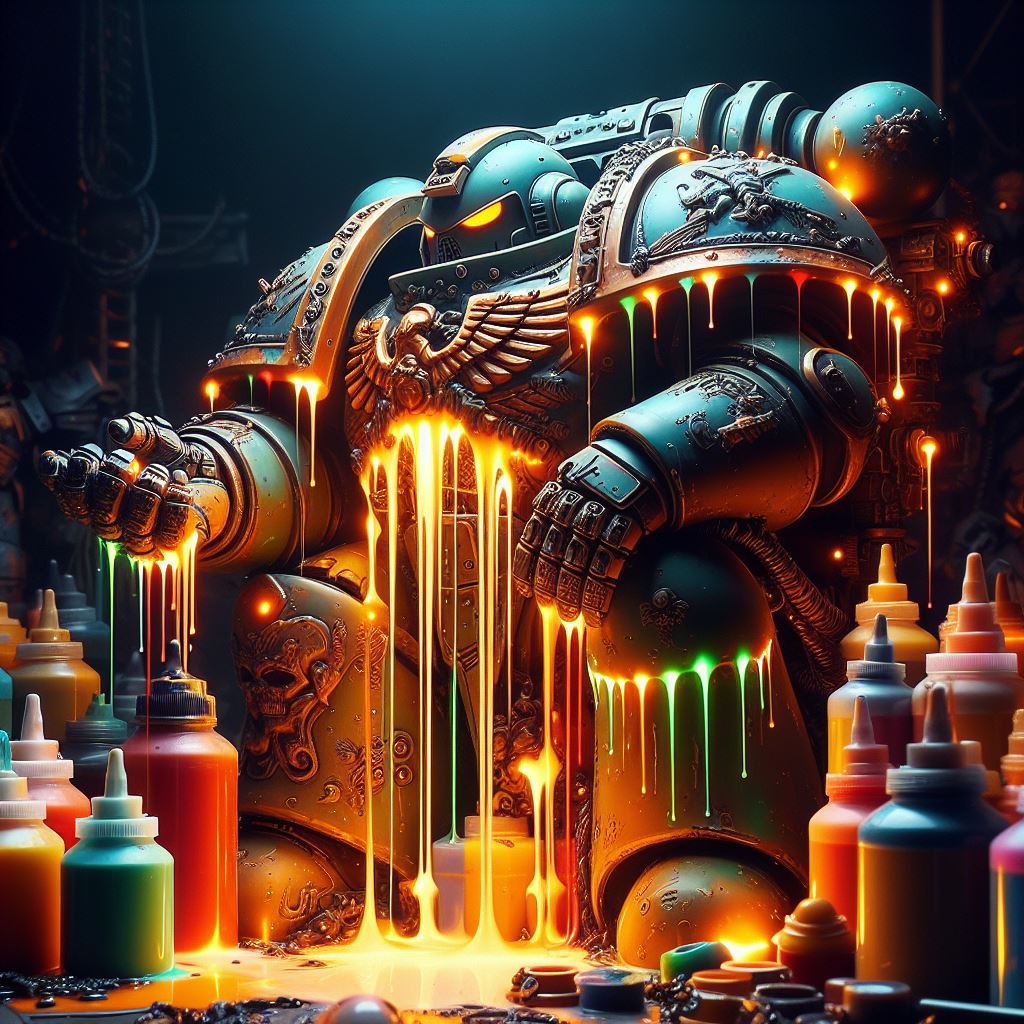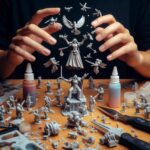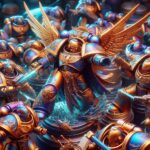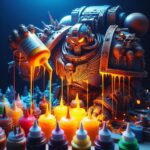How to Thin Your Paints for Miniatures: Why You Must Thin Them!
Looking for more paints? Check out our full guide on The Best Paint Sets for Miniatures
The Key Reasons to Thin Your Paint for Miniatures
Applying paint straight from the bottle often leads to a lumpy, blotchy finish that obscures detail. Thinning paint solves these issues for several reasons:
Enhanced Control – Properly thinned paint flows smoothly without dripping. You can guide thin paint precisely where you want it.
Smooth Layers – Thinned acrylics self-level better to reduce brushstrokes and give even coverage across surfaces for a smooth professional finish.
Detail Preservation – Thick paint is more likely to obscure fine details. Multiple thin layers build coverage while retaining crisp detail.
Advanced Techniques – Many advanced skills like wet blending, glazing, and smooth highlighting rely on properly thinned paints.
Layering can be difficult and confusing, a full guide here on How To Layer Paints for Warhammer Miniatures
How Thin Should Thinned Paint Be for Miniatures?
The optimum consistency depends on your goal, but a good rule of thumb is that thinned acrylic paint should flow easily off your brush without dripping. When you apply it, thinned paint should neither pool excessively in recesses nor run down vertical surfaces. Properly thinned paint remains controllable but levels smoothly without leaving distinct brushstrokes.
For basecoats, aim for semi-transparency in 1-2 coats without obscuring detail. Subsequent thin highlight layers will build opacity. Too thin and coverage suffers. Too thick and finish quality declines. Start conservatively with thinning ratios below and adjust as needed.
Thinning Paint Step-By-Step Thinning acrylic paint is a simple 3 step process:
- Place paint on palette
- Add thinner
- Mix thoroughly
When first thinning paint, add thinner sparingly then incrementally thin further until the paint flows optimally off your brush. Thinner mediums come in bottles with droppers or jars. Use a clean brush to transfer thinner to paint. Mix using the back of your brush. Test thinned paint and, if needed, continue thinning in stages.
Looking to start blending your paints? Read a great overview here on How To Paint Blend Miniatures
Your Thinning Solutions Cheat Sheet for Miniatures
- Water As the natural solvent Water is the cheapest, most readily available thinner for acrylics. But beware using too much water as over-thinned paint loses adherence and can dry splotchy. A good starting point is a 1:1 to 1:3 paint to water ratio. Filtered water is best to limit mineral contaminants which can alter paint chemistry.
- Airbrush Thinner
My top recommendation! Airbrush thinners like Vallejo work incredibly for both airbrushing and brushwork. The mild retardants maintain moisture for working time without disrupting acrylic binder. You only need a tiny amount – start with a 1:10 ratio before adding more. - Glazing Medium Glazing Mediums promote smoothness and translucency for blending layers. But thick consistency requires added water to thin effectively. Excess medium can fill recesses. For miniature glazing, start with a 1:5 glazing medium to paint ratio, adding water until the optimized consistency is achieved.
- Flow Improver Soapy flow improvers like Liquitex dramatically enhance paint flow for washes, glazes and wet blending. But use extreme care as too much risks total loss of paint control. Start by diluting flow improver 10:1 with water, then only add 1-2 drops of the diluted mixture per 5-10 drops paint.
- Mixing Medium
Hobby mixing mediums like Citadel Lahmian are quality thinners designed specifically to maintain paint properties. But at a higher cost. Artist grade acrylic mediums offer an affordable alternative. Either way, expect some loss of opacity. Start with a few drops then thin with water to desired flow.
Wet vs Dry Palettes for Thinning Paint for Warhammer Miniatures
Wet palettes keep paint moist for days. But paint can over-thin into an uncontrolled mess. Dry palettes limit working time but allow reliably tuning thinner ratios. For control, I default to a dry palette plus a drying retarder when needed to extend workability. Either way, use minimal thinner for basecoats then increase for subsequent layers.
Advanced Paint Thinning Techniques Edge Highlighting: For crisp lines, thin paint less than basecoats. Aim for a 0.5:3 thinner to paint mix. Check for impurities like dried clumps before applying.
Washes: High thinner ratios create translucent washes. Start with 3:1 thinner to paint, adjusting until wash is semi-opaque when pooled but nearly transparent when stretched thin.
Glazing: Highly thinned paint for subtle tinting over layers. Start with 2:1 thinner to paint for transparency then build tinting power over many stages. Thinning retention is vital for slow glazing process so a wet palette helps.
Looking for a new Palette? We have a great post on the Best Wet Palette for Painting Miniatures
Troubleshooting Common Paint Thinning Issues with Miniatures
Poor Adhesion – Paint slides right off the model? Thinned too much. Start over with less thinner.
Chalky Finish – If paint dries rough and chalky, use less water and more medium.
Splotches – Over-thinning risks paint drying irregularly in splotches. Reduce thinner.
Tip Dry – Paint drying on the brush tip? Use a retarder medium to slow drying time.
Brushstrokes – Thick layers may leave visible brushstrokes. Thin down for better leveling.
Filled Details – Too much medium can fill recessed details. Limit thinner ratios.
Having issues with brushes? A full overview can be found on some Miniature Painting Techniques for Warhammer
Comparing Miniature Paint Brands for Warhammer Miniatures
With all acrylic brands, follow general thinning fundamentals but adjust ratios to account for inherent viscosity differences:
Citadel – Tends thick from the pot for fuller coverage but requires significant thinning down for smoothness.
Vallejo – Slightly thinner viscosity than Citadel. Model Color thick for brushing, Model Air pre-thinned for airbrushing.
Army Painter – More medium bodied but usually still benefits from some thinning additives.
Reaper & Scalecolor – Smooth blendability with decent self-leveling but thinning expands possibilities.
Read our full overview on The Best Paint Brands for Miniatures
DIY Wet Palette Instructions
A homemade wet palette allows keeping paint workable for extended periods while saving on specialty gear costs. Follow these steps:
Supplies Needed:
- Shallow airtight container
- Paper towels
- Parchment paper
- Water
- Add water-soaked paper towels to bottom of container
- Cut parchment paper to size & place on wet paper towels
- Thin paints as desired directly on parchment paper
- Seal container between sessions to retain moisture
Check paper towels remain saturated for optimum performance. Change parchment paper periodically when paint stains accumulation.
Airbrush Thinning Guide for Miniatures
Airbrushes require greater paint fluidity than brushes. But over-thinning risks dripping, spidering, and loss of control. Follow these airbrush thinning tips:
- Start paint in 1:10 ratio with airbrush thinner
- Adjust mix by adding thinner in small increments
- Test spray pattern with adjustments as needed
- Increase thinner ratios for translucent effects
Avoid over-thinning metallic, white, or textured paints. If paint bubbles appear, mixture is too thin. Consider a paint flow improver for best airbrush atomization.
A full overview on The Best Airbush for Miniature if you need more information.
Advanced Techniques Enabled by Thinned Paint
Thinned paints empower next level skills:
Layering – Build tones with progressive thin coats
Wet Blending – Intermix wet paints for seamless transitions
Loaded Brush – Premix thick paint & medium on brush for textures
NMM – Non-metallic metals using carefully thinned layers
OSL – Color shift with thin glazes to mimic light effects
Special Effect Paint Thinning
Special variant paints use unique chemistry requiring customized thinning:
Contrast – Designed for self-leveling into shadows but limit water thinning
Fluorescent – Transparent nature makes getting vibrant even coats difficult
Metallic – Often thicker for coverage so thin cautiously to retain sparkle
Textured – Some thinning but over-thinning risks losing intended texture
Inks – Already thin, mostly use straight but can thin with water or medium
Wherever possible, utilize the specially designed custom thinners created for those paint lines. Test compatibility when improvising with other additives.
Conclusion
Learning to properly thin paint unlocks greater potential and creativity. Adapt ratios to your style. Experiment with specialty additives. Practice paint flow control. Soon you’ll expertly wield thinned paint to bring your miniatures to life! Let me know if you have any other questions – happy painting!

